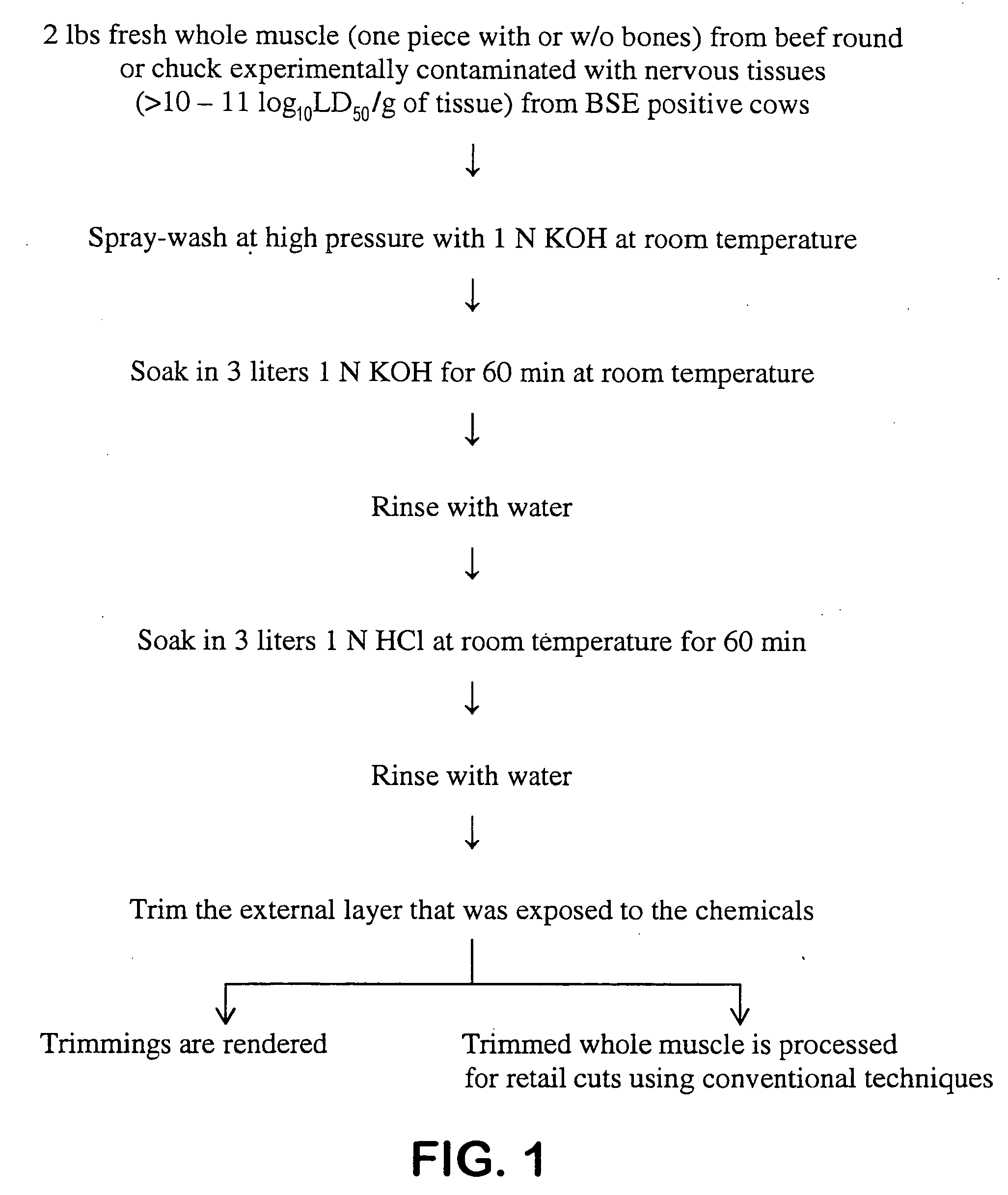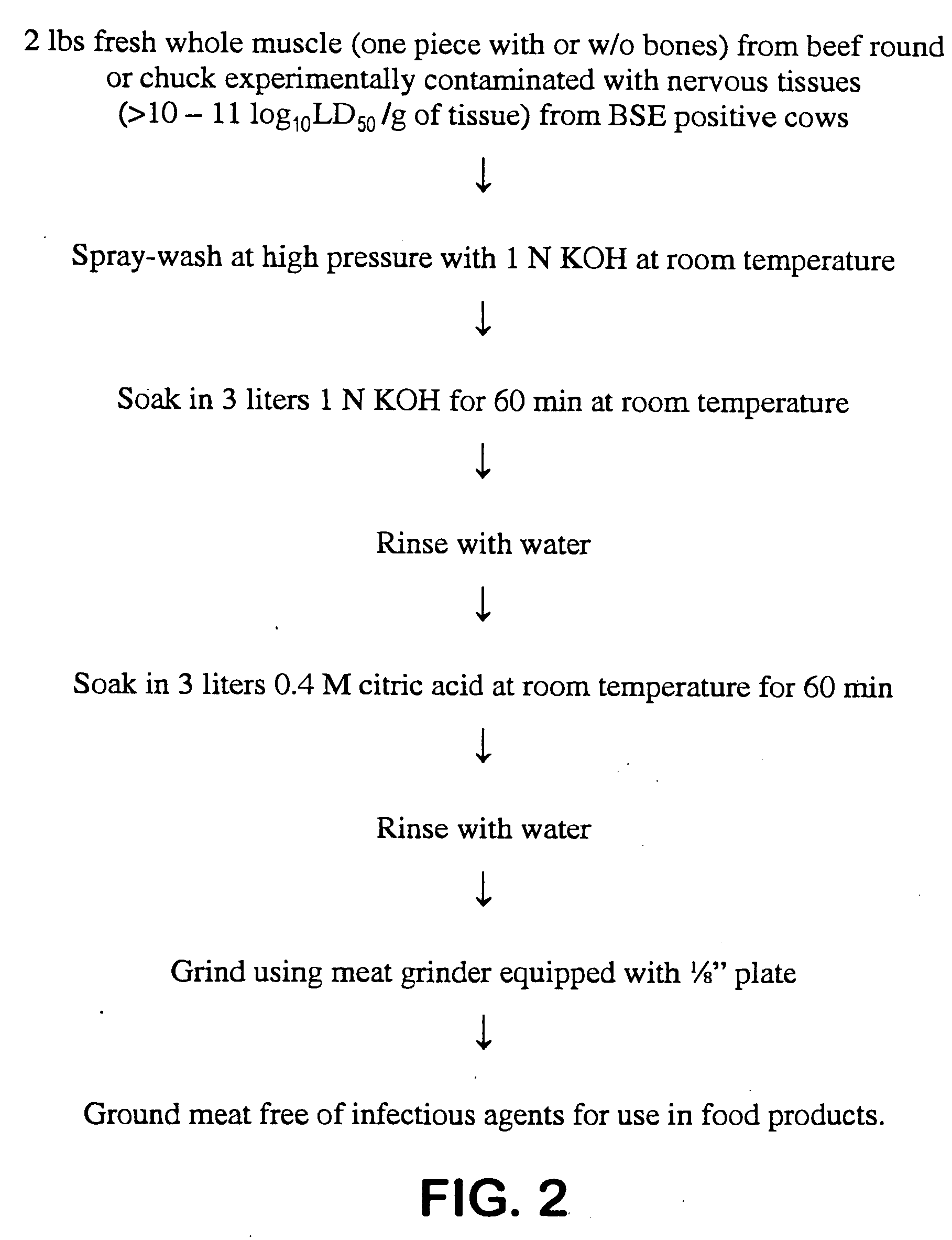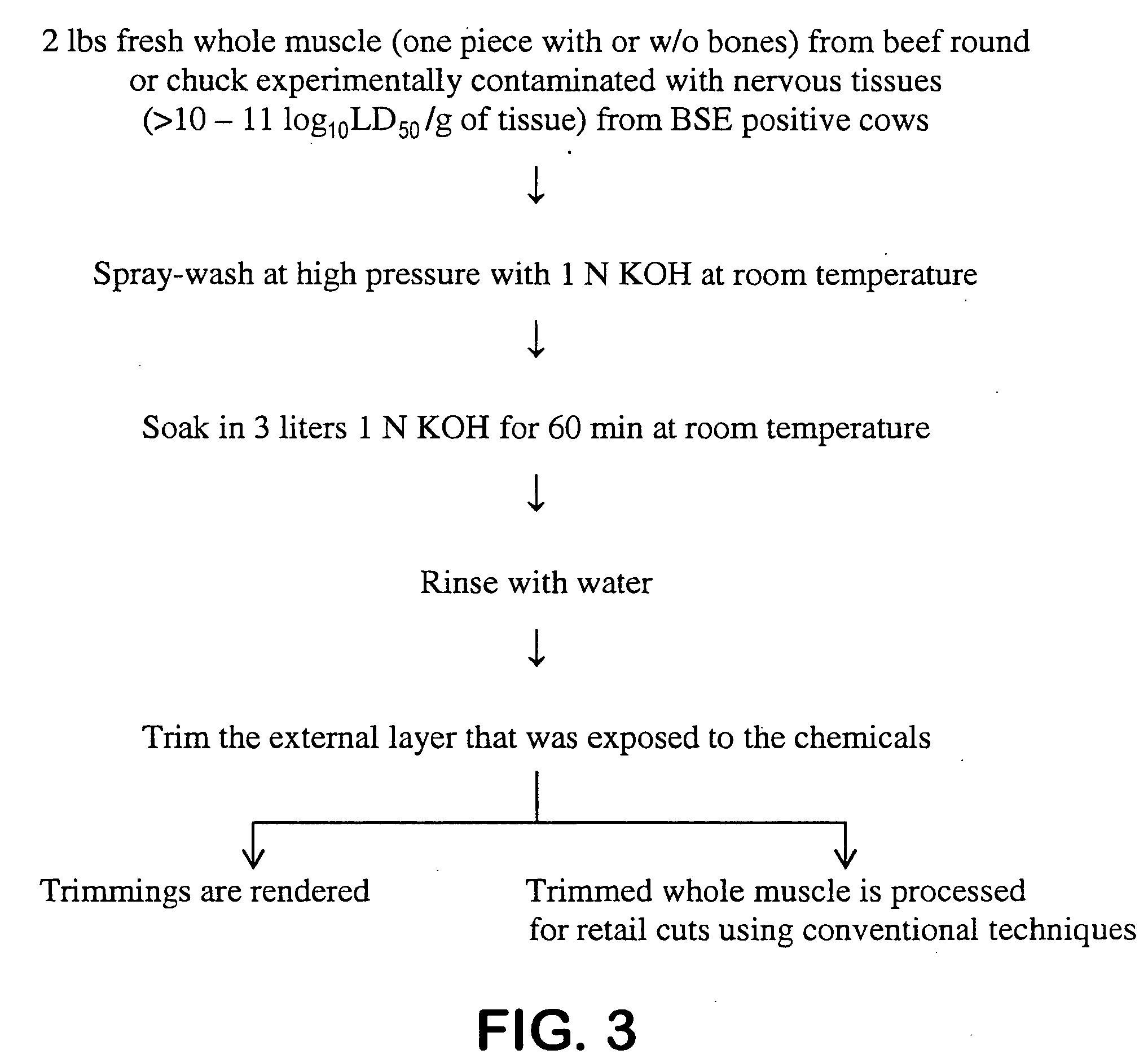Method of sanitizing a biological tissue
a biological tissue and sanitizing technology, applied in the field of sanitizing biological tissue, can solve the problems of unpermitted use of advanced meat recovery materials, unsatisfactory meat recovery results, and inability to use meat from all condemned animals as human food, so as to eliminate or reduce visible and invisible infectious contaminants, eliminate the infectivity of conformationally altered prions, and eliminate any residual infectivity in meat
- Summary
- Abstract
- Description
- Claims
- Application Information
AI Technical Summary
Benefits of technology
Problems solved by technology
Method used
Image
Examples
example 1
[0040] A 2 lb fresh whole muscle (one piece with or without bones) from beef round or chuck, which was experimentally contaminated with central nervous system tissue-fragments (brain tissues) from normal sheep brain, was spray-washed at high pressure with 1 N ethanolic KOH (ethanol:dH2O, v:v, 76:24) at room temperature to eliminate or reduce visible and invisible contaminants. The wash base solution was filtered, the filtrate is sterilized and the retentate was meticulously collected and completely incinerated for safety reasons. The spray-washed meat was soaked in 3 liters 1 N ethanolic KOH (ethanol:dH2O, v:v, 76:24) for 1 h at room temperature. The solution optionally was agitated, using a conventional pump or other means, by circulating it in and out of the soaking tank in a loop form to maintain a uniform medium. The ethanolic KOH medium was filtered on each passage. The base treated meat was washed with water and then soaked in 3 liters 1 N HCl for 1 h at room temperature for n...
example 2
[0042] Meat becomes contaminated with pathogens and specified risk material tissue-fragments from BSE positive cows during slaughter, processing and preparation for consumption. The physical removal of visible contamination by trimming the affected area from the carcass causes concerns regarding the possible spread of pathogens by contaminated knives and increased handling by workers and inspectors in abattoirs. Washing meat carcasses with an aqueous or ethanolic solution of KOH was an effective measure for reducing contamination. However, the effectiveness of this washing step in reducing pathogenic contamination depends upon the concentration of KOH in ethanol, and the temperature.
[0043] The effect of these different parameters on the reduction of prion infectivity in fresh red meat was determined according to the experimental conditions outlined in FIG. 1 and reported in the following experiments in Tables 1 and 2.
TABLE 1Effect of ethanolic KOH wash solution concentrations onr...
example 3
[0045] Fragments of specified risk materials from BSE positive cows and pathogenic microorganisms attached to fresh red meat carcass surfaces can not be easily removed by washing alone. The chemical composition of these contaminants consists of lipids, proteins, carbohydrates, and some minerals. Although washing is a very important step in this multiple intervention process, the concerns associated with it include the possibility of a less than complete decontamination and possible spreading of contamination to previously uncontaminated areas. Therefore, the intercalation of a soaking (dipping) step in the present decontamination process is desirable to provide an additional means to eliminate or reduce the infectivity of pathogens. In this step, the washed meat is completely immersed in the disinfection or sanitation medium such as all the meat surfaces are in contact with the medium. The effectiveness of this dipping step in reducing pathogenic contamination depends upon the conce...
PUM
 Login to View More
Login to View More Abstract
Description
Claims
Application Information
 Login to View More
Login to View More - R&D
- Intellectual Property
- Life Sciences
- Materials
- Tech Scout
- Unparalleled Data Quality
- Higher Quality Content
- 60% Fewer Hallucinations
Browse by: Latest US Patents, China's latest patents, Technical Efficacy Thesaurus, Application Domain, Technology Topic, Popular Technical Reports.
© 2025 PatSnap. All rights reserved.Legal|Privacy policy|Modern Slavery Act Transparency Statement|Sitemap|About US| Contact US: help@patsnap.com



